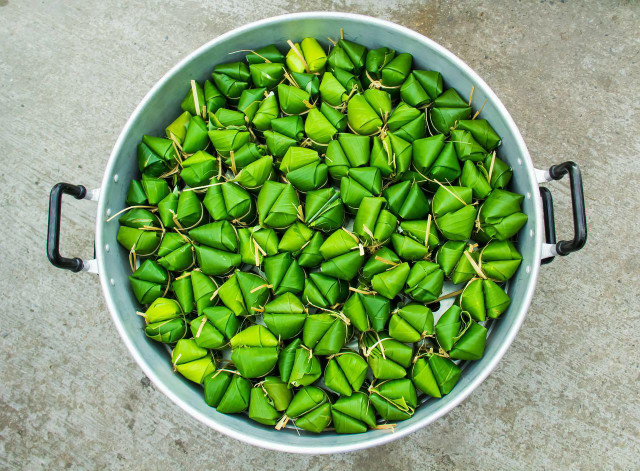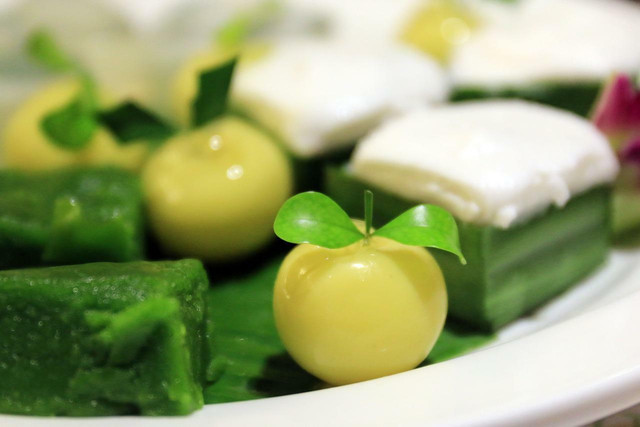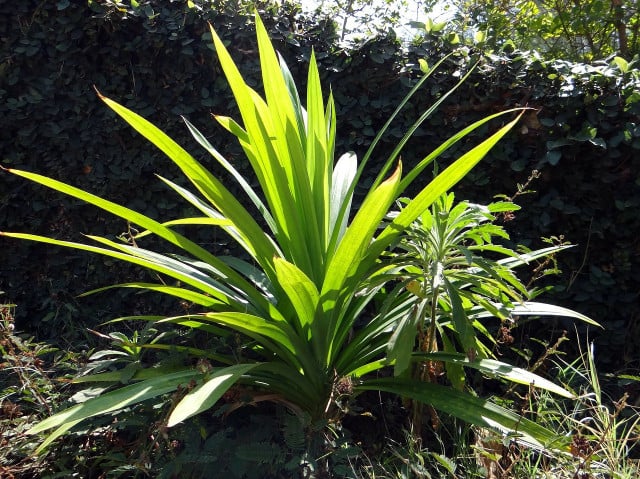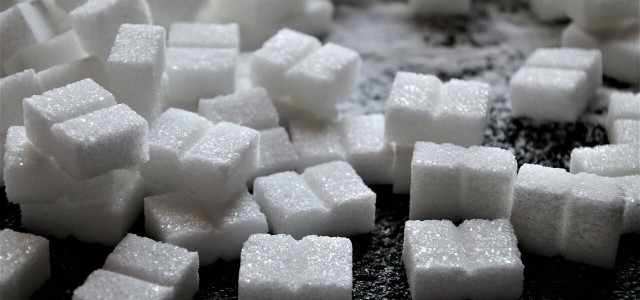You may have seen it in Asian grocery stores or on Thai dessert menus, but what is pandan? Read on to explore the benefits and uses of this fragrant tropical leaf.
If you frequent Asian grocery stores or Southeast Asian restaurants, chances are you have spotted or even eaten this ubiquitous dessert flavor without realizing it. But what is pandan? Also known as the screwpine, pandanus amaryllifolius is a tropical plant cultivated for centuries in South and Southeast Asia.
What Does Pandan Look & Taste Like?
Used as both an ornamental, culinary, and medicinal plant, pandan grows as thin aloe-like leaves from a woody stalk that eventually resembles a small palm tree when mature. Grown outdoors in tropical areas or as a houseplant in temperate regions, pandan prefers moist soil and full or partial sun. Pandan is a vigorous plant, will grow large and bushy, and can be easily propagated through cuttings.
While pandan leaves are often too fibrous to eat, they possess an aroma similar to basmati rice and subtle flavor similar to grassy vanilla and coconut.
What Is Pandan? Health Benefits

(Foto: CC0 / Pixabay / kengkreingkrai)
While pandan is usually cultivated for its pleasant aroma and flavor, it also possesses several health benefits that have been making the plant more attractive to Western consumers:
- Pandan paste (made from ground leaves) is high in fiber, calcium, iron, phosphorus, and beta carotene.
- It may help manage blood sugar in those with diabetes.
- Pandan leaves are high in antioxidants and flavonoids and may possess anti-cancer properties.
- Pandan extract has anti-microbial properties that may help preserve dishes longer.
- The fragrance may act as a natural cockroach repellant.
What Is Pandan Used For?



(Foto: CC0 / Pixabay / jing0511_)
Pandan is a versatile ingredient, whose subtle flavor lends itself well to a variety of both savory and sweet dishes:
- Fresh leaves or powder can be added to curries, soups, or rice to infuse flavor (like bay leaves). If you’ve ever wondered: Can You Eat Bay Leaves? The Facts + Recipes
- Different kinds of vegetables or breads can be wrapped in pandan leaves to infuse flavor.
- Leaves or powder can be steeped to create a tea, pressed into green juice, or concentrated into a syrup.
- Use pandan like vanilla extract in desserts: add to water cakes, vegan pancakes, or vegan ice cream sandwiches.
- Use coconut milk and agar agar to make traditional Southeast Asian jelly or silken tofu dessert.
- Use as a simple food coloring to make emerald green dishes without an intrusive flavor.
Pandan Health and Sustainability Concerns



(Foto: CC0 / Pixabay / sarangib)
Despite having numerous anecdotal health benefits linked to Ayurvedic medicine, pandan has not been widely researched to prove these claims. Fortunately, pandan is also largely safe to consume with the only known side-effect being a possible laxative effect. Since many pandan products are sold as desserts however, care must be taken not to consume too much sugar and thus negate any potential benefits.
Another concern is that of sustainability: being a tropical plant, pandan must either be imported from tropical countries or grown in a heated greenhouse, both of which increase its carbon footprint if consumed in the U.S. Additionally, pandan is a vigorous plant that requires large amounts of water and fertilizer to maintain constant leaf growth. Because it loves heat and humidity, pandan plantations also pose a direct threat to tropical rainforests ecosystems. In fact, the increasing popularity of pandan may lead to deforestation in South and Southeast Asia to make room for cultivation.
Fresh pandan leaves or pure extract may also be difficult to find, even in some Asian grocery stores. When unavailable, consider dried pandan leaves for cooking.
Read more:
- 11 Superfoods for Energy, but Also Sustainability
- Edamame Beans: Buying, Growing, & Eating This Superfood
- What Is Tamarind? What It Tastes Like & How to Use It
Do you like this post?







